
New Photos
April 28, 2007
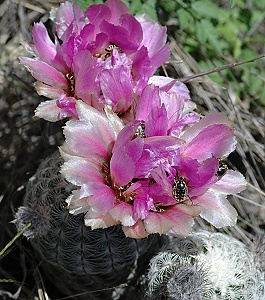 |
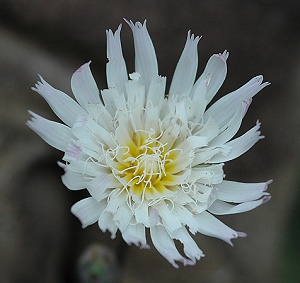 |
| Cactus flowers are a magnet for insects. This small unusual cactus, a gift, has magenta flowers that turn pinkish with age. The beetles here are harmless, but very eager to eat the cactus flower and its pollen. | This plant and flower resemble the skeleton plant, Lygodesmia texana, but iit's not even in the same genus. It's White Rock-lettuce, Pinaropappus roseus. Thanks to the National Wildflower Research Center for the ID, to whom I submitted an ID request last week. |
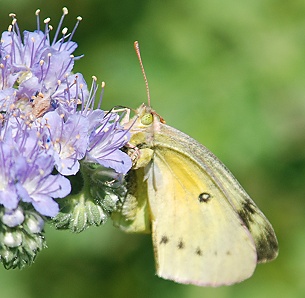 |
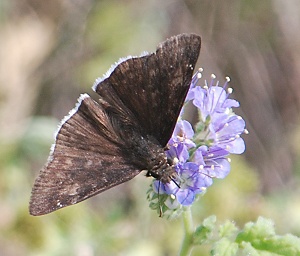 |
| The pink and purple Drummond's wild onion is through flowering, but the blue-curls peaked this week. They grow all over the low knoll of the dry woods, even on (maybe particularly on) Cactus Flat, where they look incongruous coming out between the pads of prickly pear. Butterflies like them about as well as the wild onion...and here's a sulphur butterfly, I think an orange sulfur, busily at work. The green eyes typical of sulfurs show up well, along with the pinkish antennae. | Funereal duskywings, Erynnis funeralis, are spread-wing skipper butterflies. They look black with a white fringe from a distance, but up close are really a dark velvety brown. Only the hind wings have the white fringe. |
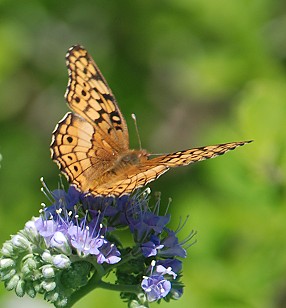 |
|
| A fresh variegated fritillary, Euptoieta claudia, nectars on bluecurls, and the blue flowers set off the warm gold and orange of the butterfly. This has been a good year for the variegated fritillaries--we have a lot of them. | |
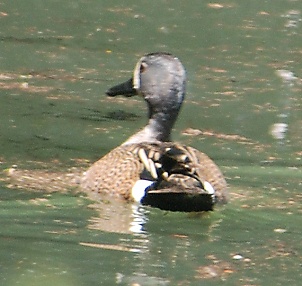 |
|
| When I walked down to the creek along the north fenceline, I was hoping to find interesting dragonflies...and I did. What I wasn't expecting was a pair of blue-winged teal, which I'd never seen before. This is the male, in breeding plumage. The female looks like a smaller version of a mallard female. She's swimming just far enough away that a reasonably sized picture of both shows them too small, I thought. | |
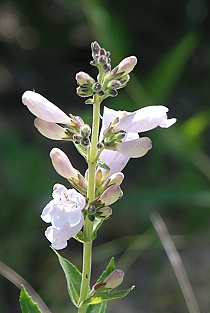 |
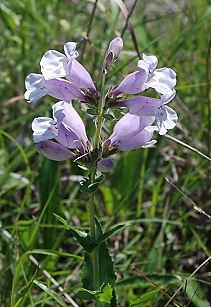 |
| Penstemon cobaea is often called wild foxglove--you can see why. It comes in a range of soft pinks, near-whites, and pale lavenders, and the individual flowers seem to catch the light. On our place, it grows only on the gravelly east bank of the creek, before the creek woods spreads to both banks. | Some of the plants produce flowers that are a darker lavender on the outside, and much whiter inside. |
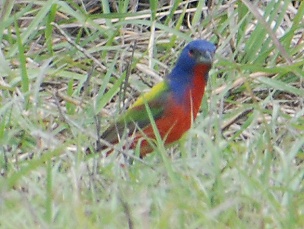 |
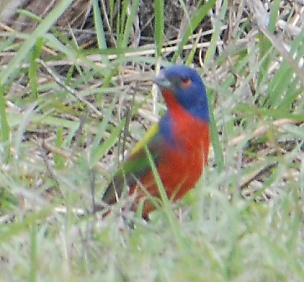 |
| The most gorgeously colored of our local birds is the Painted Bunting, a species of concern whose numbers and breeding range have contracted over the past 60 years or so. They are neotropical migrants, who come north to breed in the US. This male came out in full sunlight in the middle of the day (unusual for them) to feed at the base of the brushpile in the southwest meadow, near Owl Pavilion--and it even came up to the pavilion while we were there. | These birds are sparrow-sized, and you'd think with that strong-looking bill they'd eat large hard seeds--but their preferred seeds are tiny--the knotroot bristlegrass seeds, or, in mixed birdseed, the millet. This one was eating small fragments of corn chop I'd spread at the base of the brushpile. |
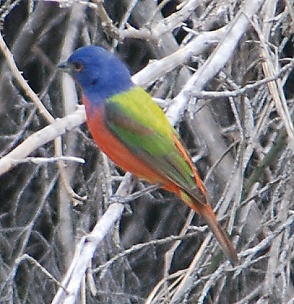 |
|
| Here he's sitting on a twig on the outside of the brushpile. You can see the lime-green (yellowish green) of the upper back, the green of the wings (which shades to a purply green on the primaries), the fact that the lower back is also red (it looks red-orange here but in reality is more red than this) and the tail shading to a dull purplish red. And let's not forget the red rim around the eyes... | |
![]()

